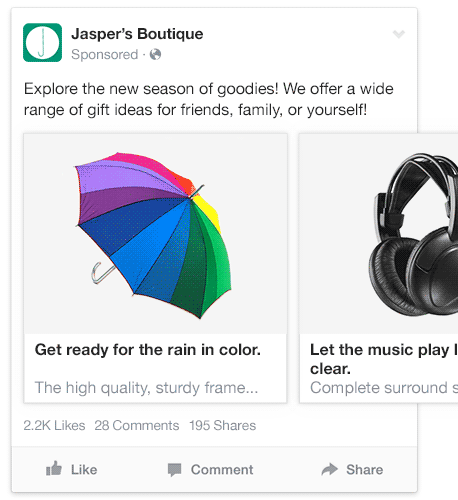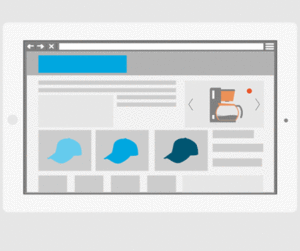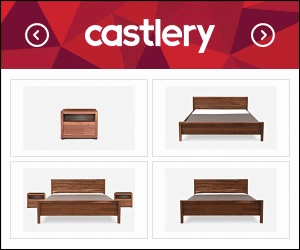
Dynamic retargeting is nothing but an extension to classic retargeting.
Retargeting
As the word itself suggests, the aim is to ‘target your customer again’. To put it simply, you’re trying to address customers who have previously shown interest in your brand.
Retargeting is especially useful if you want to:
- re-engage a customer who hasn’t purchased anything from your company for some time
- inform a regular customer about a special offer they might not be aware of otherwise
- re-engage a customer who has shown interest in your goods but not decided to purchase yet
- offer items related to goods a customer has already purchased
Retargeting has been around for ages — think of direct mail ads, telemarketers, and free catalogues. Those are all old school approaches to retargeting. The name was actually coined when online advertising became a thing, and instead of hoping that someone would answer the phone during dinner time, we’re hoping that customers will spare us some clicks. Online retargeting is at the height of its success, for two reasons:
- The Internet provides instant feedback – sending out an offer to a customer and receiving an order takes hours now, rather than days or weeks.
- The sender has a lot of information and signals about the customer’s behavior at their disposal and uses them to plan further activities. For instance, they know which particular type of goods the customer is interested in and can send them a personalized offer. They also know whether the user has seen, received, or read the offer, and whether they reacted in any way, e.g. by clicking on the seller’s website.
Retargeting can be used with a number of online advertising tools: email, banners, text ads, any social network — but we’re going to focus on Facebook.
Retargeting and cross-device
Unlike in acquisition marketing, it’s crucial to know how many devices the customer uses when retargeting. If you don’t mind a healthy balance of advertising on different devices, you bombard the consumer and achieve the least desired effect, an annoyed audience. How many times have you purchased something from a site full of pop ups you couldn’t seem to get away from? We rest our case.
Thankfully, Facebook can help out in this area: because its users stay logged-in, Facebook knows exactly who sees the ad regardless of the device they’re using.
Dynamic retargeting
Dynamic retargeting means that an ad is displayed to a customer showing a product they’ve previously shown interest in by visiting the seller’s website or clicking on a similar ad.
If you sell a limited number of products, it’s easy to set an advertising campaign for each one separately. However, most e-shops sell hundreds, if not thousands, of products.
Setting thousands of advertising campaigns manually is extremely time consuming, and honestly just a little bit insane. There are ways around this insanity. . They typically use your product catalog, which is uploaded to an advertising system, and an algorithm which checks which user viewed which product.
All that’s left for the marketer to do is to set a general ad template and the advertising system will take care of picking up one or more products from the catalog for each separate user according to their interests.

Ad content
Ad content or design in dynamic marketing is typically created by:
- a product the customer has already seen plus related goods
- additional information such as price, availability, goods description, call to action, etc.
Classic banners use HTML5 technology which allows you to combine images, text and animation into banners. Specific information is dynamically uploaded from a product catalog as an XML feed, whilst static information such as company logo, slogan, call to action button etc. is added directly into the banner.
 |
 |
However, as Facebook doesn’t allow HTML5, the ad is created only by the product image with all texts and a button displayed above and below the picture.
That means that if you want to use promotional information directly in the picture, you must enrich the product image by inserting additional items:

Ordinary image |

Enriched image |
While adjusting thousands of your product images from your XML feed is no easy task, luckily, there’s a service which can help you do that. With www.xmlcanvas.com you can set a template just like in a graphic editor and once per day, the editor will regenerate all your product images.
Who and when should you retarget
When retargeting, it’s important to know which customers you want to retarget and when. This is highly individual, so don’t be afraid to test and try what works best for you and your sales. Having said that, there are a number of general tips:
- Test how long it’s worth retargeting the users — most retargeting campaigns have a small window of effectiveness. If your customer hasn’t converted by now, you’re wasting your time. Every audience will have a different sized window — so always remember to test different lengths and keep an eye on the analytics to find your sweet spot.
HINT: Set your first campaign to 24h after customer’s visit, then try extending to 2 or 3 days.
- Focus on the consumers who are buying the products you really want to sell. We get it, most catalogs include some stuff you might not be so proud of and definitely aren’t going to spend more money on to advertise, so don’t. Keep your sights set on the products you really want to move, otherwise you’re wasting everyone’s time and money.
HINT: Only pay to advertise the most important products.
- Be careful to only retarget consumers who are truly interested in your products. Research their behaviors and preferences then build your campaign accordingly. There’s a big difference between consumers who have purchased from you before and those who accidentally clicked an ad. Knowing the difference helps you become a better advertiser. Do your visitors scroll and click around or do they come to your site searching for the exact product they already know they want? Ask your programmers to watch out for these important metrics.
HINT: Do your customer research.


